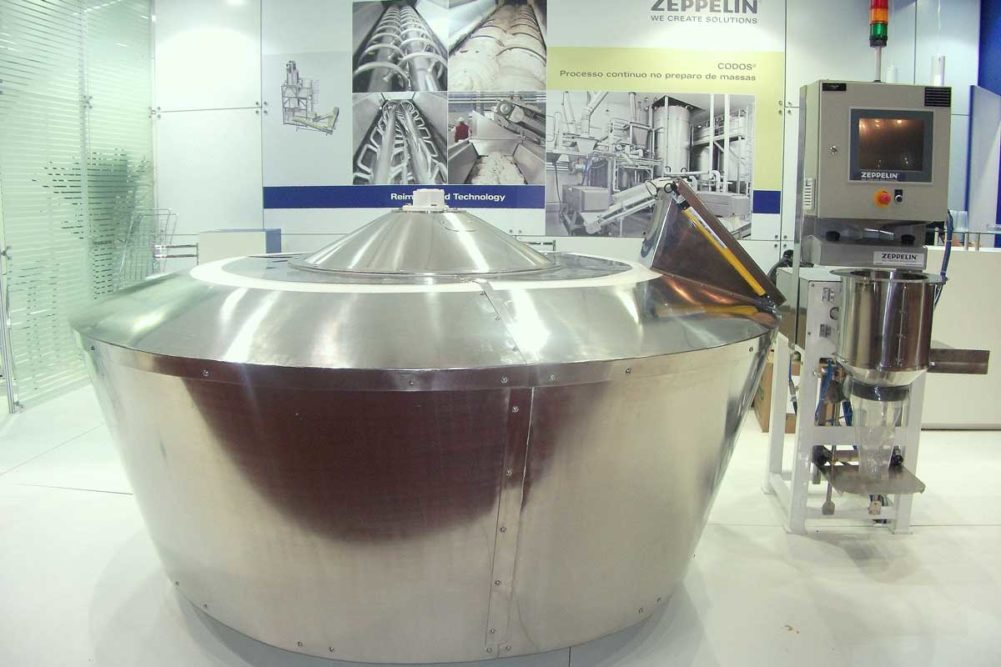When it comes to automation, smaller ingredients are often overlooked. Because of the capital investment required, it can be hard to justify the cost of an ingredient handling system for such small pieces of a formulation. However, one of the greatest benefits — accuracy — is something that minor and micro ingredients are greatly affected by.
“Minor and micro ingredients are the active ingredients in a formula,” said Jason Stricker, director of sales and marketing, Shick Esteve. “They are added in small amounts, but their function in the formula is very important. There is a very narrow band allowed for the activity of those ingredients, thus accuracy plays a critical role.”
These ingredients are often the ones that help products differentiate from the competition. And because in bread and roll formulations at least there isn’t much in the formulation to begin with, a slip in accuracy can have a big impact.
“These are frequently items that contribute to the color, nutritional value or taste of the finished product, so accuracy of these ingredients is extremely important to producing a consistent quality product,” said Mike Drew, engineering supervisor, Sterling Systems & Controls. “If there are large variances in these critical ingredients, people notice.”
Despite this, bakers often wait on automating the storing and scaling process. Part of that is a return on investment (ROI) issue, but trying to achieve consistent accuracy when automating later can be tricky.
“Frequently, minors and micros are an afterthought in the overall system design, and then it’s hard to try to find that accuracy using the legacy system that you have,” said Darren Adams, vice president, engineering, The Fred D. Pfening Co. “You really do need a precise system dedicated for that specific application, and once you have that, it should operate to the same level of accuracy as your other ingredient systems do.”
Micro and minor ingredients create issues for automation that bulk ingredients might not. The precision bakers need alone is a challenge.
“Usually bakers request a very precise system to reach grams of variation, and that’s where things start to be difficult,” said David Rodriguez, regional sales engineer, South America, Zeppelin Systems USA. “Fully automatic minor dosing systems used to be very expensive due to the high-precision dosing equipment used to reach that accuracy. Most of the time, it surpasses the budget of the product.”
These ingredients can be very sensitive, and because they are being measured in such small increments, the equipment must scale and convey them to the mixing bowl perfectly to prevent product loss. This often requires a dedicated system.
“It is hard to measure minor and micros accurately if you’re trying to use a system that isn’t specifically designed for that batch size,” Mr. Adams explained. “We have a hard time getting a minor system to deliver micros with any accuracy because it’s not designed for that level of detail, accuracy or gradation.”
Norm Searle, sales and marketing, GOE/Amherst Stainless Fabrication, offered the measuring device resolution as an example.
“Expecting to measure to one-hundredth of a specified amount in a system capable of only measuring in tenths creates a problem,” he said. “This is also of concern when it comes to the delivery mechanics. A device not capable of delivering an incremental change measured in 0.00 will quickly exceed the amount called for.”
Mr. Adams quickly pointed out, however, that if a system is designed from the start to handle both minors and micros, a bakery shouldn’t see any more issues with accuracy than another system. Designing a system requires attention to not only scaling range but also storage and handling. Bearings, air seals, tubing size and blower size all must be considered for each specific ingredient because each one will have different needs based on particle size and how it responds to temperature and moisture.
“Gluten is incredibly difficult in the sense that it becomes very airborne, and it’s very fine,” Mr. Adams said. “Condensed milk is very temperature sensitive. If there’s a lot of heat, it will almost liquify. Some of these ingredients you can’t transfer pneumatically because of the added heat.”
By creating an ingredient system dedicated to minor and micro ingredients, bakers can achieve repeatable accuracy they can depend on for quality finished products.





